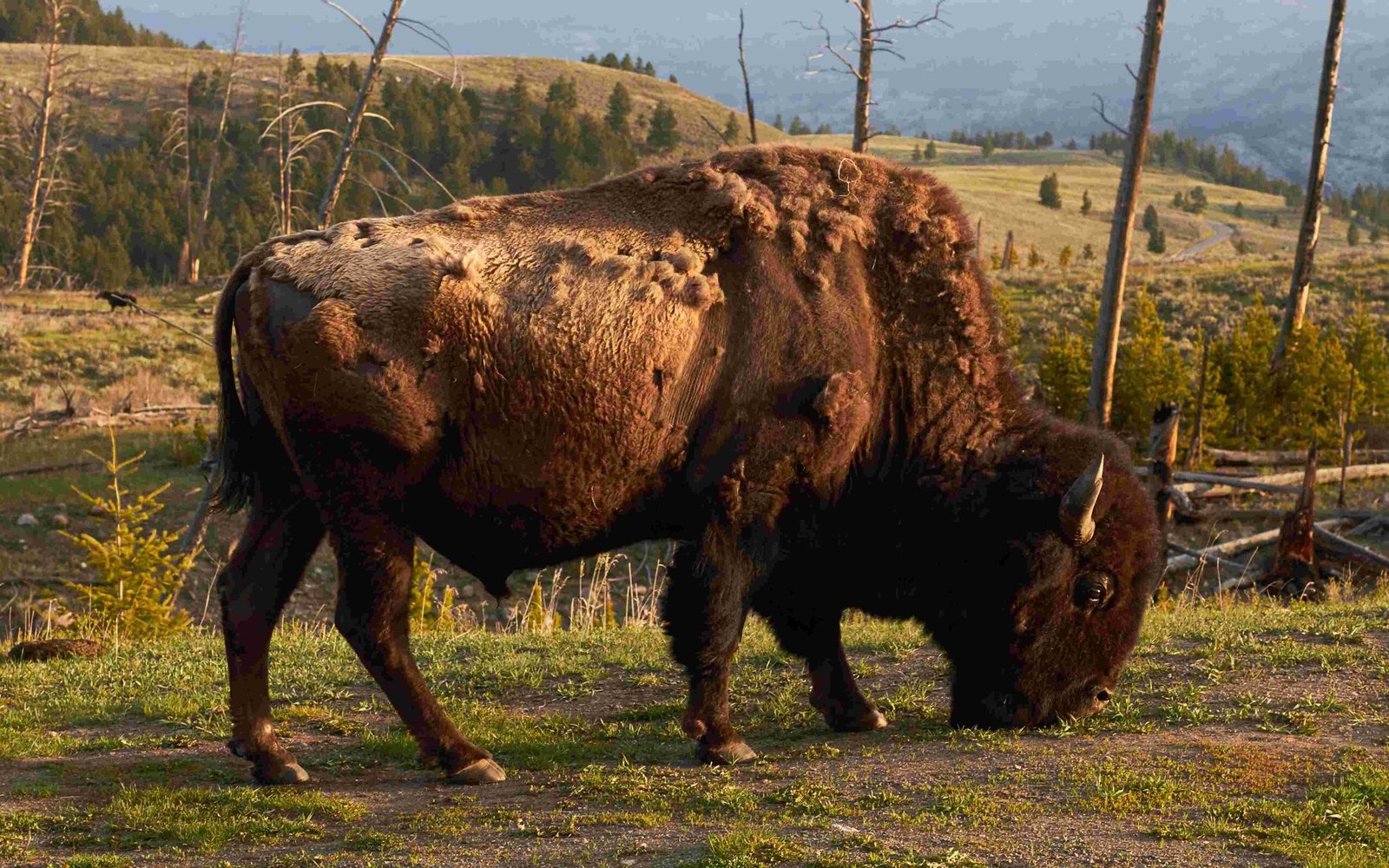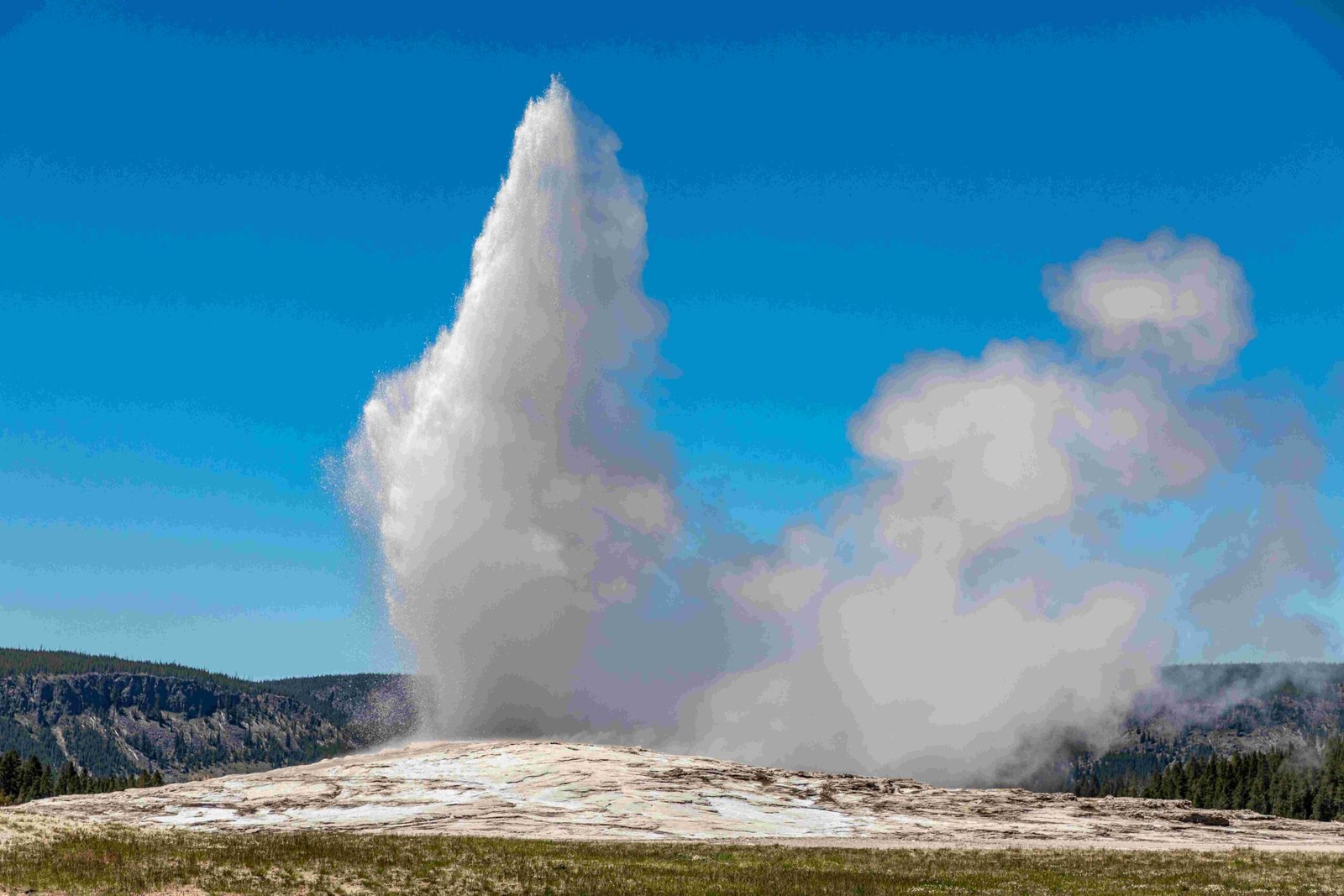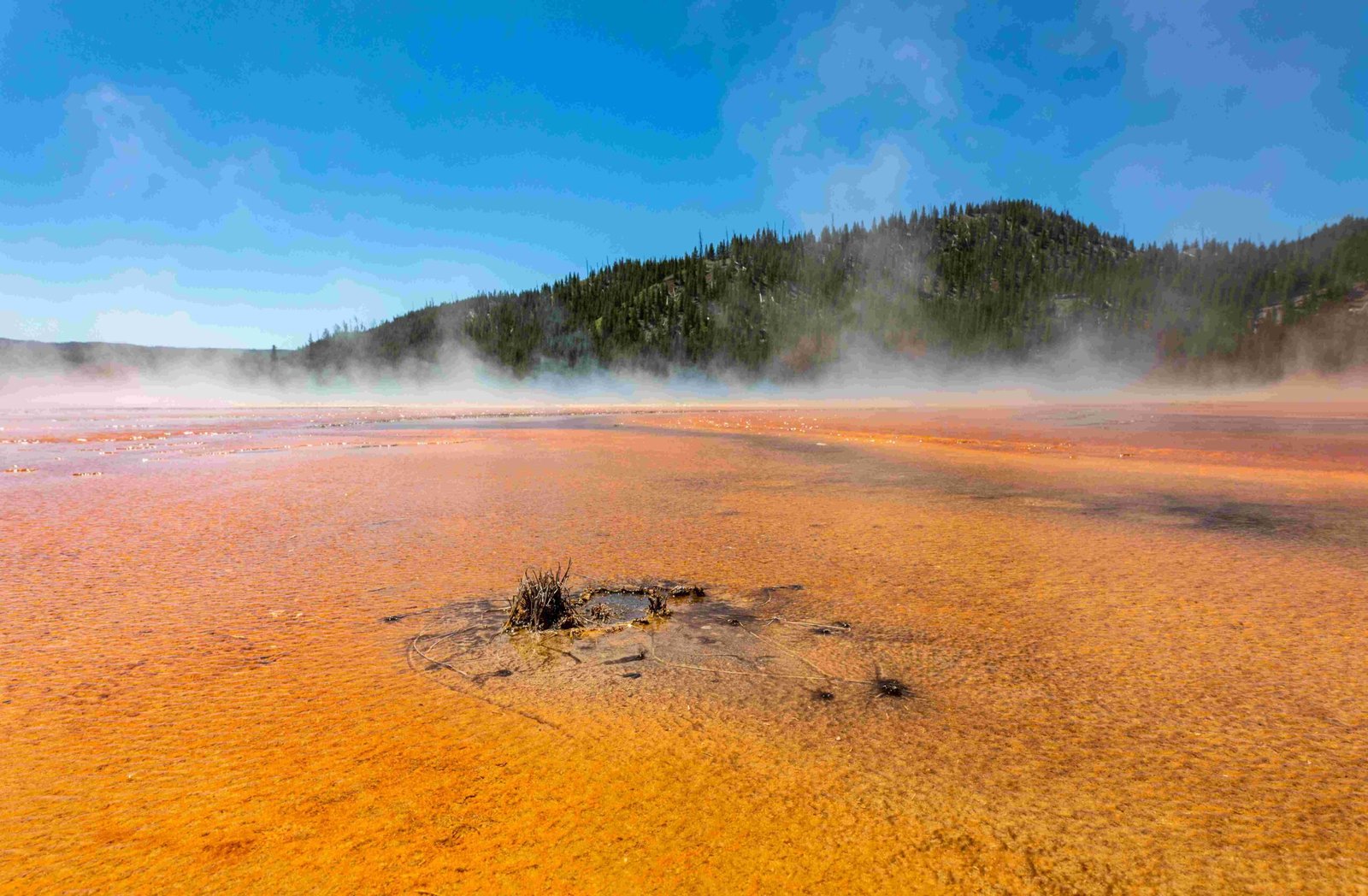Yellowstone National Park’s last major eruption occurred approximately 640,000 years ago, known as the Lava Creek eruption. This colossal event formed the current Yellowstone Caldera and produced the Lava Creek Tuff. While smaller eruptions and hydrothermal activity have occurred since then, the park has not experienced a supereruption in over half a million years. Understanding Yellowstone’s volcanic history is crucial for assessing its current state and potential future activity.
What Was the Exact Date of Yellowstone’s Last Major Eruption?

The last major eruption of Yellowstone National Park took place around 640,000 years ago. This event, known as the Lava Creek eruption, was a supereruption that dramatically reshaped the landscape and had far-reaching effects. Key points about this eruption include:
- Magnitude: Estimated to be 1,000 times larger than the 1980 Mount St. Helens eruption
- Impact: Formed the current Yellowstone Caldera, measuring 43 by 28 miles (70 by 45 kilometers)
- Geological Evidence: Produced the Lava Creek Tuff, a thick layer of volcanic debris still visible today
What Are the Significant Eruption Dates in Yellowstone’s History?

Yellowstone’s volcanic activity spans millions of years. Here’s a timeline of major eruptions:
- 2.1 million years ago: Huckleberry Ridge eruption
- Formed the Island Park Caldera
- Produced the Huckleberry Ridge Tuff
-
Largest of the three known supereruptions
-
1.3 million years ago: Mesa Falls eruption
- Formed the Henry’s Fork Caldera
-
Produced the Mesa Falls Tuff
-
640,000 years ago: Lava Creek eruption
- Formed the current Yellowstone Caldera
-
Most recent supereruption
-
174,000 years ago: West Thumb eruption
- Created the West Thumb of Yellowstone Lake
-
Smaller scale compared to previous supereruptions
-
70,000 years ago to present: Recent activity
- Non-explosive lava flows
- Ongoing hydrothermal activity and steam explosions
What Were the Characteristics of Yellowstone’s Last Major Eruption?
The Lava Creek eruption, occurring 640,000 years ago, was a cataclysmic event with the following characteristics:
- Eruption Type: Supereruption
- Ejected Material: Massive amounts of ash, molten rock, and gases
- Plume Height: Thousands of meters into the atmosphere
- Affected Area: Plunged a third of the North American continent into darkness
- Immediate Impact: Pyroclastic flows devastated the surrounding landscape
- Long-term Effects: Reshaped the topography, forming the current Yellowstone Caldera
How Has Yellowstone’s Volcanic Activity Changed Over Time?
Yellowstone’s volcanic history shows a pattern of major eruptions interspersed with periods of relative calm:
| Time Period | Activity Type | Frequency |
|---|---|---|
| 2.1 million to 640,000 years ago | Supereruptions | Every 600,000 to 800,000 years |
| 640,000 to 70,000 years ago | Smaller eruptions and lava flows | Intermittent |
| 70,000 years ago to present | Hydrothermal activity and minor explosions | Ongoing |
This pattern suggests that while major eruptions are infrequent, the volcanic system remains active on a smaller scale.
What Are the Current Scientific Observations of Yellowstone’s Volcanic Activity?
Scientists closely monitor Yellowstone’s volcanic system using various methods:
- Ground Deformation: Measuring changes in the earth’s surface
- Seismic Activity: Tracking earthquakes and tremors
- Gas Emissions: Analyzing the composition and volume of gases released
- Hydrothermal Features: Observing changes in geysers, hot springs, and fumaroles
Recent observations include:
- Ongoing ground swelling and subsidence cycles
- Frequent small earthquakes
- Periodic hydrothermal explosions, such as the one on July 23, 2024, in Biscuit Basin
These observations help scientists understand the current state of the volcanic system and assess potential future activity.
What Are the Implications of Yellowstone’s Eruption History for Future Activity?
Understanding Yellowstone’s eruption history is crucial for assessing potential future volcanic activity:
- Eruption Intervals: The pattern of supereruptions every 600,000 to 800,000 years suggests that a major eruption is not imminent
- Ongoing Activity: Smaller eruptions and hydrothermal activity are more likely in the near future
- Monitoring Importance: Continuous scientific observation is essential for detecting any significant changes in the volcanic system
- Preparedness: While a supereruption is unlikely in the near term, understanding the potential impacts helps in developing emergency response plans
How Does Yellowstone’s Volcanic Activity Compare to Other Volcanoes?
Yellowstone’s volcanic system is unique in several ways:
- Scale: One of the largest known volcanic systems on Earth
- Eruption Type: Capable of producing rare supereruptions
- Caldera Size: The Yellowstone Caldera is exceptionally large at 43 by 28 miles
- Hydrothermal Features: Home to the world’s largest concentration of geysers and hot springs
- Monitoring Efforts: Subject to extensive scientific study and continuous observation
Unlike more frequently erupting volcanoes, Yellowstone’s major eruptions are separated by hundreds of thousands of years, making it challenging to predict future large-scale events.
What Are the Potential Impacts of a Future Yellowstone Eruption?
While a supereruption is not currently expected, understanding potential impacts is important:
- Ash Fall: Widespread distribution of volcanic ash, affecting air quality and infrastructure
- Climate Effects: Potential short-term global cooling due to ash and gases in the atmosphere
- Ecological Disruption: Significant changes to ecosystems in the surrounding regions
- Economic Impact: Disruption to agriculture, transportation, and other industries
- Societal Challenges: Potential for large-scale evacuations and long-term displacement
It’s important to note that the likelihood of a supereruption in the near future is extremely low, and smaller-scale volcanic activity is more probable.
In conclusion, while Yellowstone National Park’s last major eruption occurred 640,000 years ago, the volcanic system remains active with ongoing hydrothermal activity and minor eruptions. Continuous scientific monitoring provides valuable insights into the current state of the volcano and helps in assessing potential future activity. Understanding Yellowstone’s eruption history is crucial for appreciating the park’s geological significance and preparing for potential future scenarios.
References:
1. Yellowstone National Park Service – Update on the July 23 Biscuit Basin hydrothermal explosion
2. Wikipedia – Yellowstone Caldera
3. Global Volcanism Program – Yellowstone

